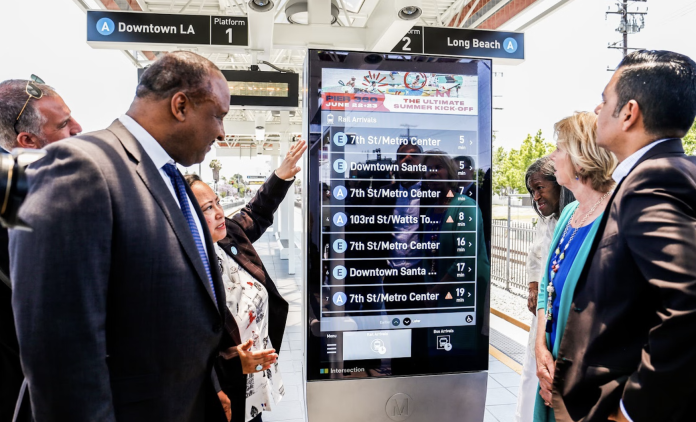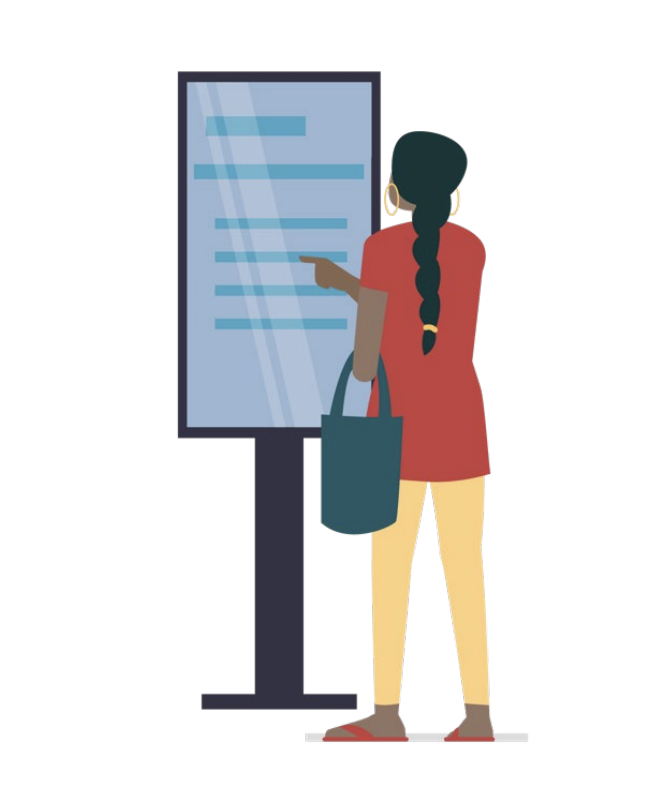Sound Transit unveiled plans for a new “digital assistant” and passenger-facing technology program last week. The agency wants to build a single tool that would allow riders to do regional trip planning, obtain real-time information, receive interactive support, and pay their fares, which could be a first-in-the-nation innovation for transit. The digital assistant is expected to be available online, via mobile apps, and at in-station interactive touchscreen kiosks and provide services translated into seven languages. The agency is also pursuing a suite of other projects that should improve the rider experience through technology tools.
What the digital assistant will do
The agency has already selected IBI Group as the vendor to develop individual tools necessary to deploy the digital assistant. Elements of it will be rolled out in phases:
- Phase 1 will entail the trip planner, mobile apps for iOS and Android, a real-time information and dynamic re-routing tool, and specialized user profiles to remember preferences and common travel habits;
- Phase 2 will entail creation of an automated chatbot and interactive response tool; and
- Phase 3 will entail integration of ORCA fare payment.
The project timeline is anticipated to take just over two years to deploy all phases of the digital assistant. Phase 1 could come by next summer (9 months) while Phase 2 and Phase 3 are expected to take 16 and 28 months to deliver, respectively. A fourth phase will eventually be rolled out with the kiosks and other features, but a specific timeline for that has not been identified yet.
One of the truly unique features of this planned digital assistant tool is the real-time re-routing and navigation technology that Sound Transit wants to pursue.
The digital assistant is slated to be smart enough to alert riders on the best way to complete their journeys if there is an active service disruption. Riders could be given live options to take a scrambled bus bridge or other regular parallel transit services if Link service becomes fully or partially suspended. Riders could also get step-by-step navigation within stations, which would be immensely helpful for people with disabilities or mobility concerns. Real-time navigation information could route them most efficiently within vertical stations where elevators or escalators might be out of service.
Of course, all of this hinges on data quality for success. Sound Transit plans to ensure that the tool is programmed with the most up-to-date information available on vertical conveyances. The agency is planning to roll out monitors to vertical conveyance equipment to alert the agency when equipment goes offline, which should improve real-time data and information in this service area.
Other passenger-facing technology efforts
In tandem with the digital assistant effort, Sound Transit plans to work through several related projects that could improve services and support other passenger-facing technology tools.
One improvement is collaborating with partner regional transit agencies to standardize and clean up data. This is critically important since many transit agencies different names the same routes or stations and curate their data independently. That can create challenges in trying to build universal tools that cover all transit agencies in the region.
Another effort will build a regional trip planner that every transit agency in the region could host on their websites. Right now, nearly every transit agency (including Sound Transit) has built their own trip planners and tailored them to their unique needs. But Sound Transit plans to build one that could meet the needs of all transit agencies. This would cut down on redundant efforts, provide a higher level of accuracy, and improve the experience of transit riders whose rides cross multiple transit agencies.
Lastly, Sound Transit will work with a digital mapping company to fully map the spatial environment of stations and facilities, such as corridors, stairs, ticket vending machines, and elevators. This will help in building enhanced accessibility tools, particularly for people who are visually impaired. The data collected will be so detailed that, when deployed into tools, it can help users navigate to ticket machines, platforms, and elevators with precision directions. Users could be told to take 20 steps forward, turn right, proceed five steps, press the elevator button, then enter an elevator in a similar step-by-step fashion as GPS apps do for people driving. In fact, users will be able to hear the information through a voice-assistant feature. All of this will be integrated into the digital assistant tool.
The exact timing for completion of these projects is not yet clear, but they will certainly improve the rider experience in the years ahead. Whether through the digital assistant, online, or third-party apps, Sound Transit looks to tap into technology enhancements and features to improve the rider experience.
Stephen is a professional urban planner in Puget Sound with a passion for sustainable, livable, and diverse cities. He is especially interested in how policies, regulations, and programs can promote positive outcomes for communities. With stints in great cities like Bellingham and Cork, Stephen currently lives in Seattle. He primarily covers land use and transportation issues and has been with The Urbanist since 2014.



